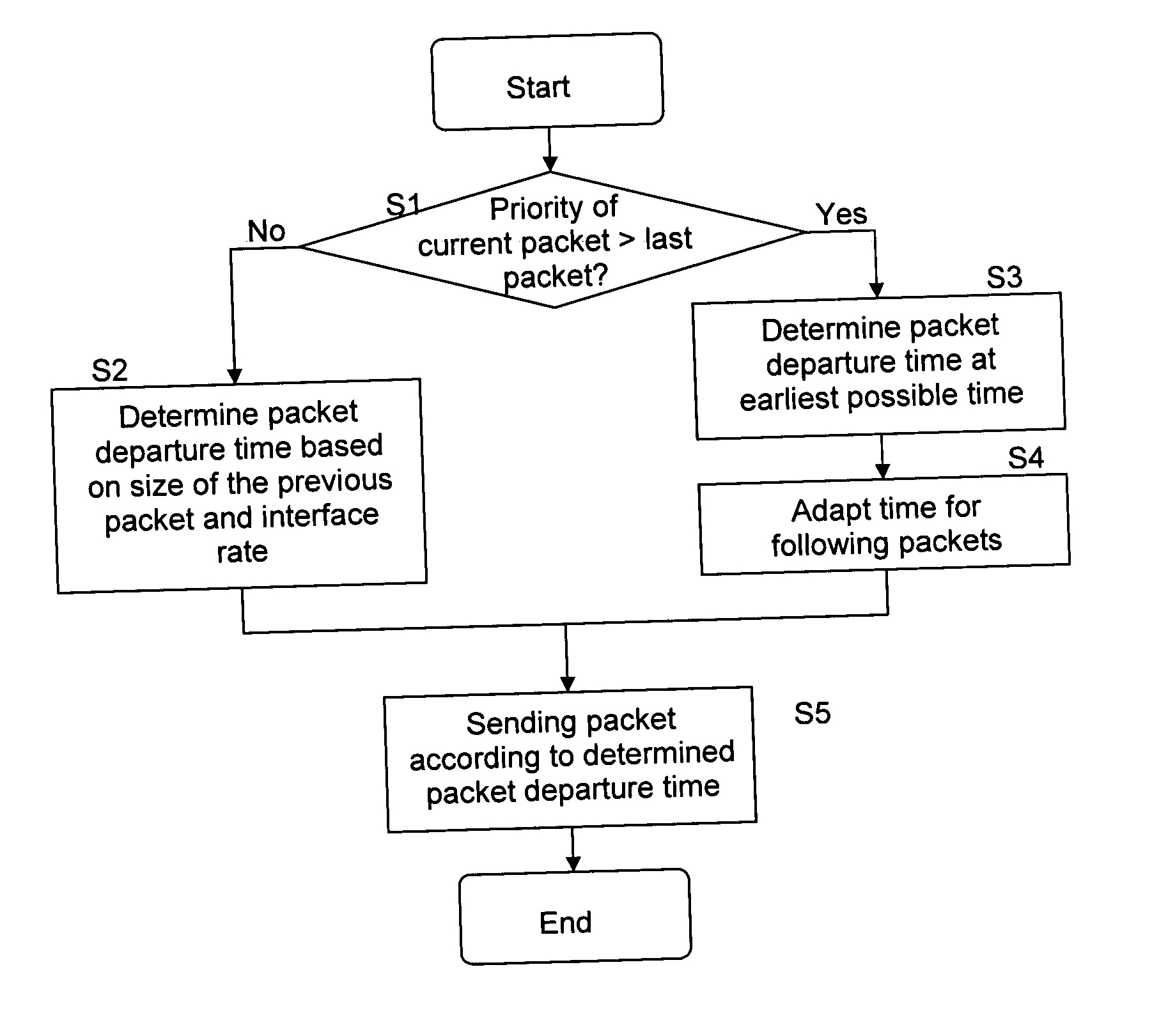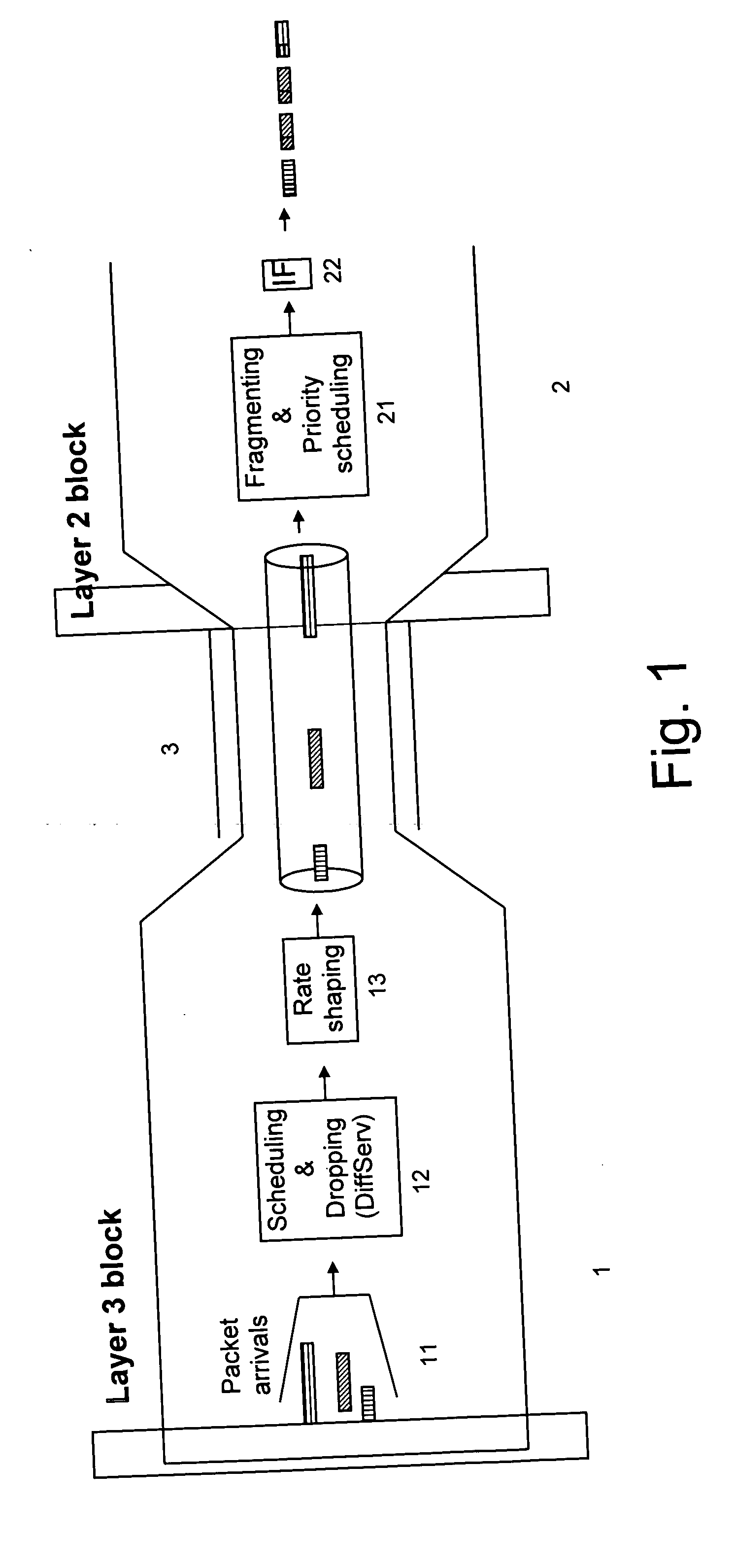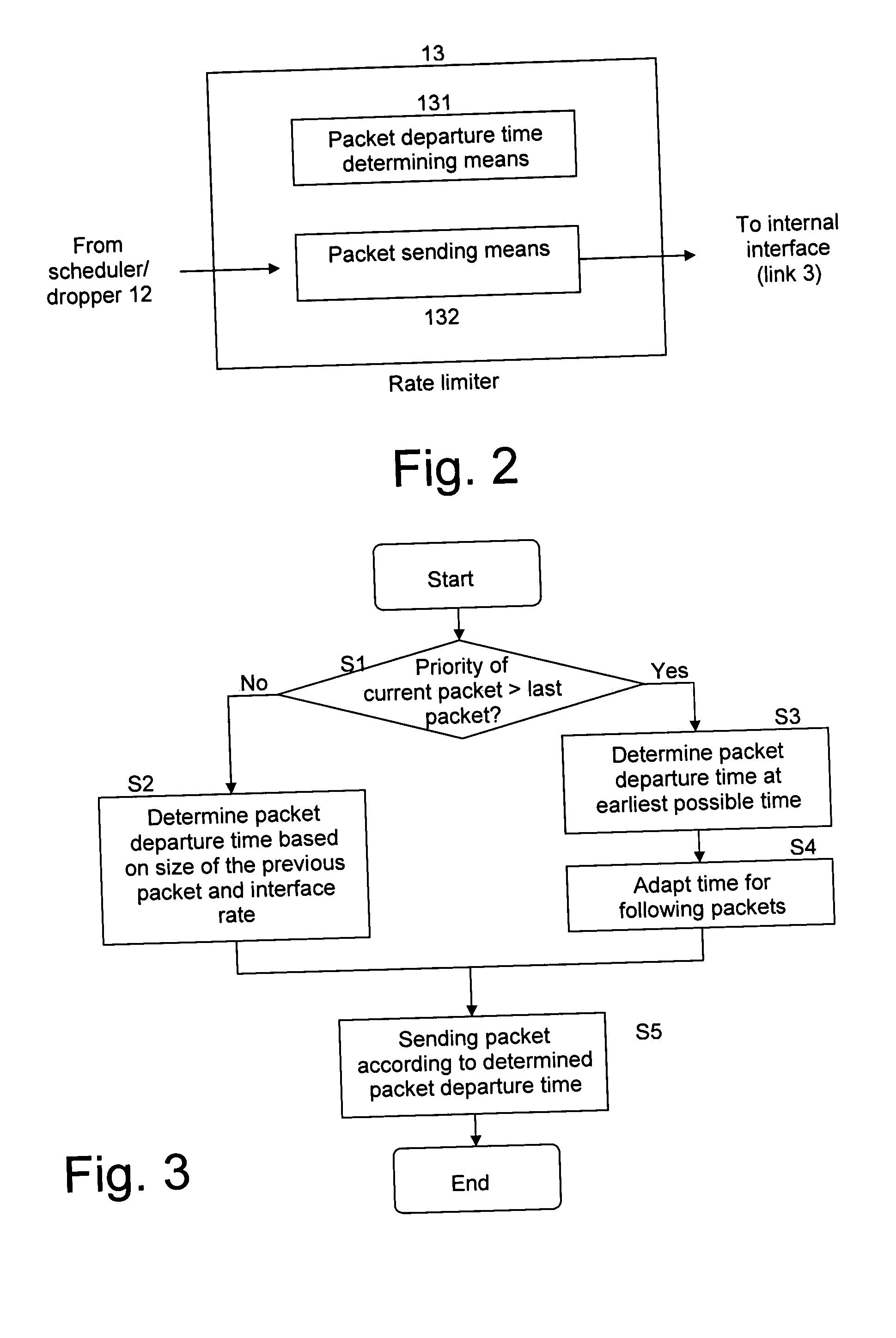Rate shaper algorithm
a rate shaper and algorithm technology, applied in the field of rate shapers, can solve the problems of high priority packets such as packets of real-time applications, too much for real-time applications, and special serious problems, and achieve the effects of reducing delay, reducing delay, and speeding up packet delivery
- Summary
- Abstract
- Description
- Claims
- Application Information
AI Technical Summary
Benefits of technology
Problems solved by technology
Method used
Image
Examples
Embodiment Construction
[0025] In the following, a preferred embodiment of the present invention is described by referring to the attached drawings.
[0026] First, the general problem underlying the present invention is described in detail in the following.
[0027] An IP router or MPLS label switching router may implement QoS mechanisms on layer 3 (e.g. following the Differentiated Services (Diffserv) architecture) as well as on layer 2 (e.g. MCMP or Diff-UBR). DiffServ on layer 3 works on complete packets and consists of packet scheduling according to priorities and potentially dropping for congestion avoidance. Various algorithms for strict priority scheduling, weighted scheduling and congestion avoidance are in use.
[0028] MCMP and Diff-UBR on layer 2 perform fragmentation of layer 3 packets in layer 2 fragments or cells and consist of fragment scheduling according to priorities. Also here, strict priority scheduling or a weighted scheduling mechanism can be applied. The purpose is to interleave fragments...
PUM
 Login to View More
Login to View More Abstract
Description
Claims
Application Information
 Login to View More
Login to View More - R&D
- Intellectual Property
- Life Sciences
- Materials
- Tech Scout
- Unparalleled Data Quality
- Higher Quality Content
- 60% Fewer Hallucinations
Browse by: Latest US Patents, China's latest patents, Technical Efficacy Thesaurus, Application Domain, Technology Topic, Popular Technical Reports.
© 2025 PatSnap. All rights reserved.Legal|Privacy policy|Modern Slavery Act Transparency Statement|Sitemap|About US| Contact US: help@patsnap.com



